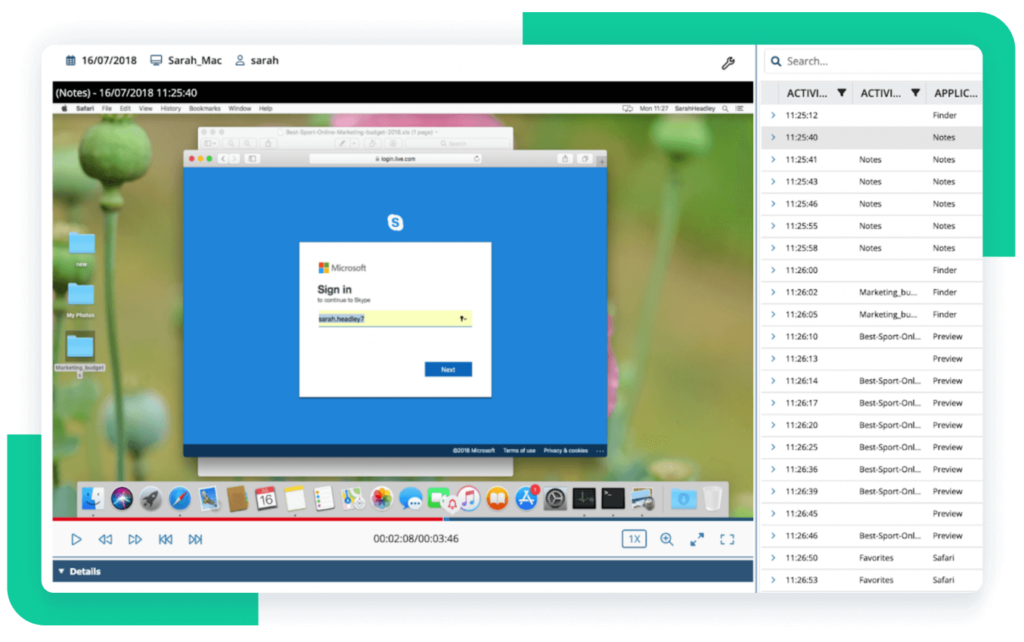Cybersecurity regulations are constantly evolving to keep pace with emerging cybersecurity risks, and the Directive on Security of Network and Information Systems (NIS) is no exception. The introduction of NIS2 in December 2022 reshaped the compliance landscape across the EU, and organizations that don’t meet its requirements risk facing far more than just regulatory fines.
The true cost of NIS2 non-compliance can be devastating, affecting not only finances but also business continuity and trust. In this article, we’ll examine the key consequences of NIS2 violations, showing you why proactive security measures are more important than ever.
What is NIS2 and why do you need to comply?
The NIS2 Directive (Directive (EU) 2022/2555) is the European Union (EU) cybersecurity regulation designed to strengthen cybersecurity across essential and critical organizations within the EU.
The NIS2 Directive covers public and private entities operating or offering services in the following sectors within the EU:
Note: Whether your organization is covered by the NIS2 Directive not only depends on the sectors it belongs to but also on its size. Refer to Article 2 and Annexes I and II of the Directive for more information.
According to the 2024 Report on the State of the Cybersecurity in the Union, NIS2 was introduced to address inconsistencies in how Member States within the EU interpret and apply the incident reporting requirements of the original NIS Directive adopted in 2016.
Another key reason for NIS2’s introduction was the growing number of cyberattacks. The ENISA Threat Landscape 2024 report showed a notable escalation in cybersecurity attacks from late 2023 to mid-2024. In addition, according to NIS Investments 2024, 53% of EU organizations are expecting an increase in cyberattacks in 2025.
NIS2 requires Member States to adopt national cybersecurity strategies that include comprehensive objectives, resources, and policy measures to achieve and maintain a high level of cybersecurity. Overall, implementing those strategies can help organizations to:
- Enhance risk-management measures
- Improve supply chain security
- Ensure sufficient awareness about cybersecurity and risk management
- Cooperate and exchange cybersecurity information with peers
To ensure compliance with the NIS2 Directive, access our ebook and receive practical guidance and proven best practices for meeting NIS2 cybersecurity requirements.
Complying with NIS2 can help strengthen organizational cybersecurity, but violating NIS2 directive requirements may cost you a lot. To ensure organizations meet NIS2 requirements, authorities supervise compliance through various monitoring measures.

How authorities supervise NIS2 compliance
Depending on whether your organization is classified as an important or essential entity, the level of oversight by competent authorities may vary.
If there are indications of possible compliance violations by important entities, authorities can engage trained professionals to conduct both on-site inspections and off-site supervision. They may also initiate targeted security audits by an independent body or audit entities themselves.
Authorities may also evaluate compliance through security scans or issue requests for evidence of information, documentation, and implementation to verify cybersecurity policies and risk-management measures.
Supervision is even more rigorous for essential entities. Authorities can initiate on-site and off-site inspections at any time, regardless of whether there is prior evidence of non-compliance.
Essential entities are also subject to regular security audits designed to ensure ongoing adherence to cybersecurity standards. In the event of a significant security incident or suspected violation, regulators may conduct ad hoc audits to assess the impact and identify gaps in security measures.
Organizations that fail to comply risk facing financial penalties for NIS2 violations and many other negative consequences.
Request access to Syteca’s online demo!
See how Syteca can help you boost your cybersecurity.
What can NIS2 violations cost you?
From business disruptions to potential liability, the impact of NIS2 violations can be severe. Here’s what’s at stake for organizations that fail to meet the directive’s requirements.
Hefty fines
Failure to comply with NIS2 can result in significant financial penalties. NIS2 fines are designed to be effective, proportionate, and dissuasive, compelling organizations within the EU to take cybersecurity seriously. Regulators assess each case individually, considering the severity of the violation, its impact, and any mitigating factors.
Thus, if your organization is considered essential by the directive, you can face fines of up to €10 million or 2% of your total worldwide annual turnover, whichever is higher. Furthermore, if your organization qualifies as an important entity, you may be fined up to €7 million or 1.4% of your total worldwide annual turnover.
Operational expenses
Beyond regulatory fines, authorities may issue binding instructions or remediation orders that may require urgent investments in recruiting, restructuring processes, and extensive employee training.
To meet NIS2’s cybersecurity risk management and reporting requirements, you may need to acquire advanced security tools and establish robust security frameworks. Implementing these measures should be necessary for compliance anyway, but when authorities step in, it becomes even more urgent and stressful for your organization. Instead of implementing new technologies and processes at your own pace and on your own terms, you’ll be forced to act under pressure, potentially making overly hurried and costly decisions.
You may also end up requiring additional security audits and seeking external consultancy to meet compliance hastily, incurring more expenses.
Business disruptions
According to the 2024 ENISA Threat Landscape, DDoS attacks and ransomware are among the top cybersecurity threats, both of which can severely impact your business continuity. Non-compliance with NIS2 cybersecurity requirements exposes your organization to these and many other threats.
Beyond security risks, non-compliance can trigger regulatory actions directly impacting your day-to-day operations. Authorities may issue orders to cease infringing conduct, potentially halting critical business activities and leading to financial losses or contract breaches.
If your organization is an essential entity, regulators may temporarily suspend or prohibit some of your operations, leading to major financial troubles and employee layoffs. Authorities may also appoint a monitoring officer, which can create internal friction and complicate business operations.
Reputational damage
Cybersecurity incidents and compliance enforcement measures your organization experiences can erode stakeholder trust, weaken customer relationships, and tarnish your brand image.
If an incident occurs due to a violation of NIS2, you’ll be required to inform any affected parties about what occurred and why, disclosing all aspects of the violation. As a result, your organization could face negative media coverage, a reduction in market value, loss of partner trust, and customer churn.
Even if violations don’t lead to incidents, the competent authorities can issue warnings about compliance violations that may serve as a red flag to your partners, investors, and clients. Hence, you may have to redress doubts about your organization’s security posture.
Executive liability
NIS2 makes compliance not just a corporate responsibility but also a personal one. CEOs, CIOs, CISOs, and board members can be held accountable if their organization fails to meet the directive’s requirements.
Executives may face substantial personal fines. In cases of gross negligence — such as failing to implement essential security measures — they could even face criminal liability. Additionally, violations may negatively impact their careers if the competent authorities impose leadership bans.
Beyond these, there is the possibility of facing civil lawsuits from affected parties. Customers, partners, or investors impacted by a security incident may take legal action to hold executives responsible for the incurred damage.
To avoid these consequences, organizations must prioritize cybersecurity, take a comprehensive approach to meeting NIS2 standards, and deploy dedicated tools.
Explore Syteca’s capabilities.
Test how Syteca can help you secure critical systems and data.
Meeting NIS2 requirements with Syteca
Syteca is a cybersecurity platform offering powerful user activity monitoring and privileged access management capabilities that enable you to meet regulatory compliance and safeguard your organization’s most sensitive assets.
NIS2 requires organizations to implement a broad set of cybersecurity measures. Here’s what the directive’s key cybersecurity requirements demand that organizations put in place:
By leveraging Syteca’s comprehensive functionality, you can proactively meet these requirements and adhere to NIS2 compliance best practices.
- Assess security risks and oversee users’ adherence to information security policies with Syteca’s continuous monitoring, user activity reporting, and intuitive dashboards.
- Handle security incidents with automated, rule-based alerts and responses to suspicious activity.
- Streamline reporting activities with the ability to export tamper-proof evidence.
- Ensure continuity of business operations by securing your endpoints and servers from unauthorized access with Syteca PAM.
- Evaluate the effectiveness of cybersecurity measures by analyzing detailed audit trails paired with convenient search and filtering through activity logs.
- Secure cooperation with external partners by mitigating supply chain risks with Syteca’s third-party vendor monitoring and remote session recording capabilities.
- Supplement cybersecurity awareness training with session recordings of risky user behavior.
- Observe your workforce’s reaction to security threats during live cyberattack simulations.
- Verify user identities before providing access to your organization’s resources with two-factor authentication and one-time passwords generated by Syteca.
- Protect user data by pseudonymizing monitoring results and encrypting collected data.
Syteca offers quick deployment across on-premises, cloud, and hybrid environments. The streamlined setup process requires minimal effort without impacting system performance and disrupting employee processes.
Conclusion
Failing to comply with NIS2 can result in much more than regulatory fines — it’s a business risk with financial, legal, and operational consequences. It’s imperative to take a proactive approach by strengthening cybersecurity policies, implementing robust access controls, and ensuring continuous monitoring to comply with the directive’s requirements.
A well-structured security strategy, supported by the right cybersecurity tools, can streamline the compliance process. Syteca’s robust cybersecurity platform offers advanced UAM and PAM solutions that provide your organization with the visibility and control you need to meet NIS2 compliance requirements and mitigate security risks effectively.





